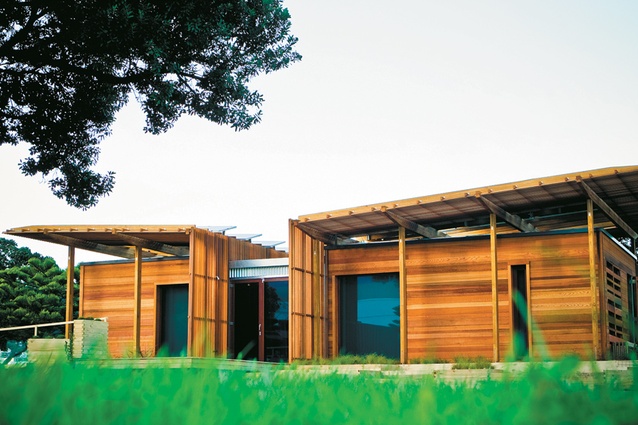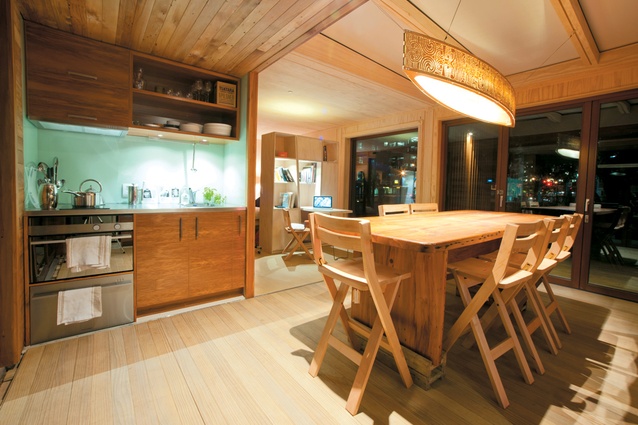The First Light House
Over the last few weeks builders have been toiling over a house in Frank Kitts Park in Wellington, not building it, but taking it apart and carefully putting it in a container. This is the First Light House, Victoria University’s entry in the Solar Decathlon, a biennial competition held in Washington DC. Much has been written about the achievement of this entry: the only one, ever, from the southern hemisphere; its energy management systems; its sustainable performance. Not enough has been said, yet, about it as a work of architecture. So here goes.
The plan is a marvel that stands up to interrogation. The constraints of sustainability (let alone those of what will fit into two containers) have led to an economy of planning that breaks new ground in the small house. Seriously. A long box, cut in half, creates a living end and a sleeping end. In the cut, the bi-section, lie the dining room and the kitchen (the eating bit). Architects have been wrestling with these three zones for years but nowhere have they been so carefully delineated and seamlessly assembled.
The living end is close, snug and yet light-filled. The built-in couch transforms into additional bunks like a grounded campervan but does so far more comfortably. The sleeping end has a bed open to the rest of the space with privacy controlled through the cautious placement of a room divider. Service rooms tuck neatly away.
But the masterstroke is the eating bit: a kitchen reduced to two small opposing benches (because who has time to cook, really?) and a massive concrete table which provides passive solar energy. All this on an internal deck blurring the lines between inside and outside, proving that indoor/outdoor flow means a whole lot more than simply a set of French doors.
The exterior form of the building is light and uplifting with the floating butterfly-winged slatted canopy that lifts the roof – and by extension, the house – off the ground. This is architecture for a new age. It may be a trick of the light but it is a good one.











